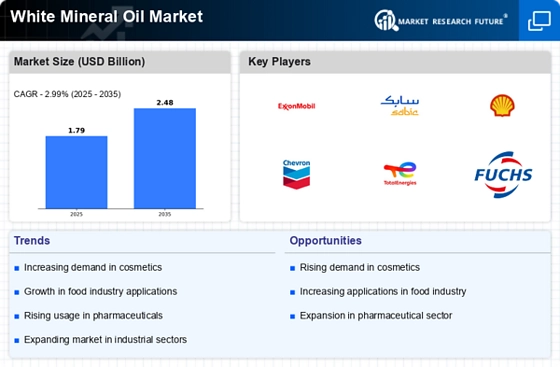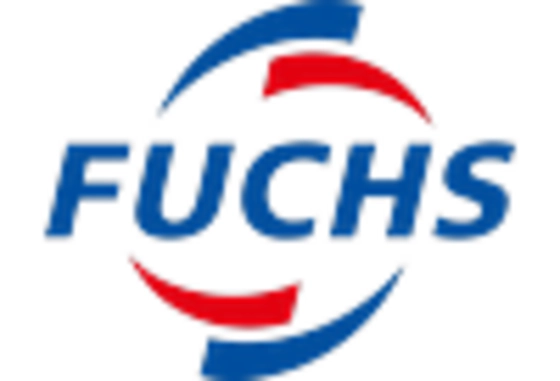Rising Demand in Food Industry
The White Mineral Oil Market is experiencing a notable increase in demand from the food sector. This is primarily due to its application as a food-grade lubricant and release agent in food processing. The market for food-grade white mineral oil is projected to grow at a compound annual growth rate of approximately 5% over the next few years. This growth is driven by the rising need for safe and effective lubricants that comply with food safety regulations. As consumers become more health-conscious, the demand for non-toxic and food-safe products is likely to rise, further propelling the White Mineral Oil Market. Additionally, the versatility of white mineral oil in various food applications enhances its attractiveness to manufacturers, thereby contributing to market expansion.
Growth in Pharmaceutical Applications
The White Mineral Oil Market is witnessing significant growth due to its extensive use in the pharmaceutical sector. White mineral oil serves as an excipient in various formulations, including ointments, creams, and liquid medications. The increasing prevalence of chronic diseases and the subsequent rise in pharmaceutical production are expected to drive the demand for white mineral oil. Recent data indicates that the pharmaceutical excipients market is anticipated to grow at a rate of around 6% annually, which bodes well for the White Mineral Oil Market. Furthermore, the inert nature of white mineral oil makes it a preferred choice for formulators seeking to enhance product stability and shelf life, thereby solidifying its role in the pharmaceutical landscape.
Regulatory Support and Standardization
The White Mineral Oil Market is positively influenced by regulatory support and standardization initiatives. Governments and regulatory bodies are increasingly establishing guidelines to ensure the safety and quality of mineral oils used in various applications. This regulatory framework not only enhances consumer confidence but also encourages manufacturers to adopt higher quality standards. Compliance with these regulations is likely to drive the demand for refined and high-purity white mineral oils. Furthermore, as industries strive to meet these regulatory requirements, the market for white mineral oil is expected to expand, as companies seek to ensure their products are compliant and safe for consumer use.
Increasing Use in Industrial Applications
The White Mineral Oil Market is benefiting from the increasing use of white mineral oil in various industrial applications. Its properties, such as high thermal stability and low volatility, make it an ideal choice for lubricants, hydraulic fluids, and other industrial products. The industrial lubricants market is projected to grow steadily, with white mineral oil playing a pivotal role due to its effectiveness and safety profile. As industries continue to seek reliable and efficient lubricants, the demand for white mineral oil is expected to rise. Additionally, the versatility of white mineral oil allows it to be utilized across multiple sectors, including automotive, manufacturing, and construction, thereby broadening its market reach.
Technological Advancements in Refining Processes
Technological advancements in refining processes are playing a crucial role in shaping the White Mineral Oil Market. Innovations in refining techniques have led to the production of higher purity white mineral oils, which are increasingly sought after in various applications. Enhanced refining processes not only improve the quality of the oil but also reduce production costs, making it more accessible to manufacturers. As industries demand higher quality standards, the ability to produce superior white mineral oil is likely to drive market growth. Moreover, these advancements may lead to the development of specialized grades of white mineral oil tailored for specific applications, further expanding the market's potential.


















Leave a Comment